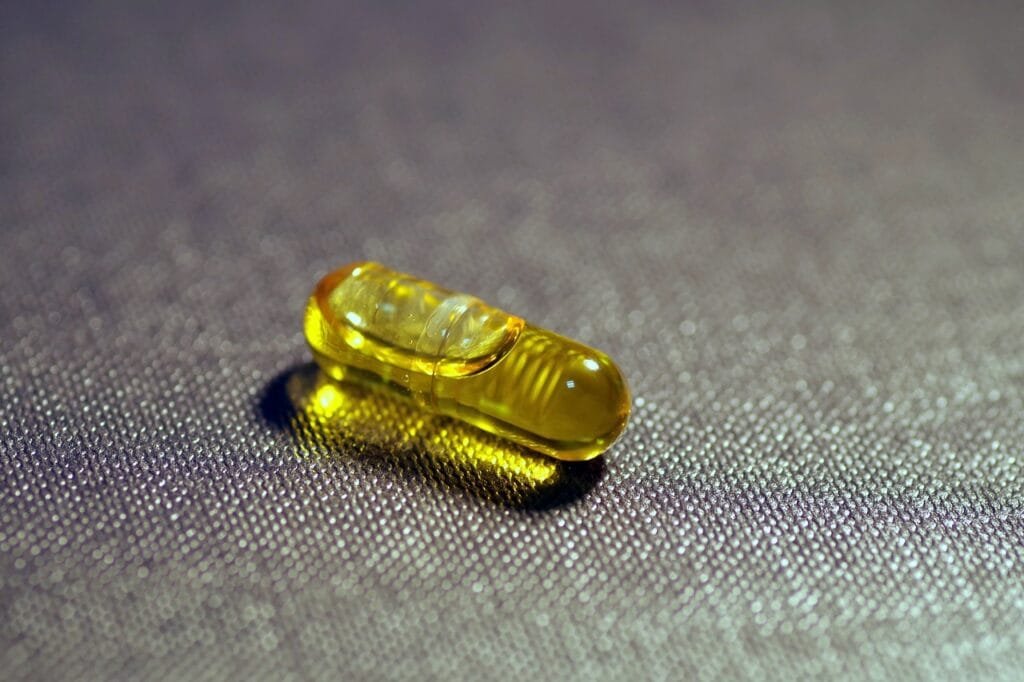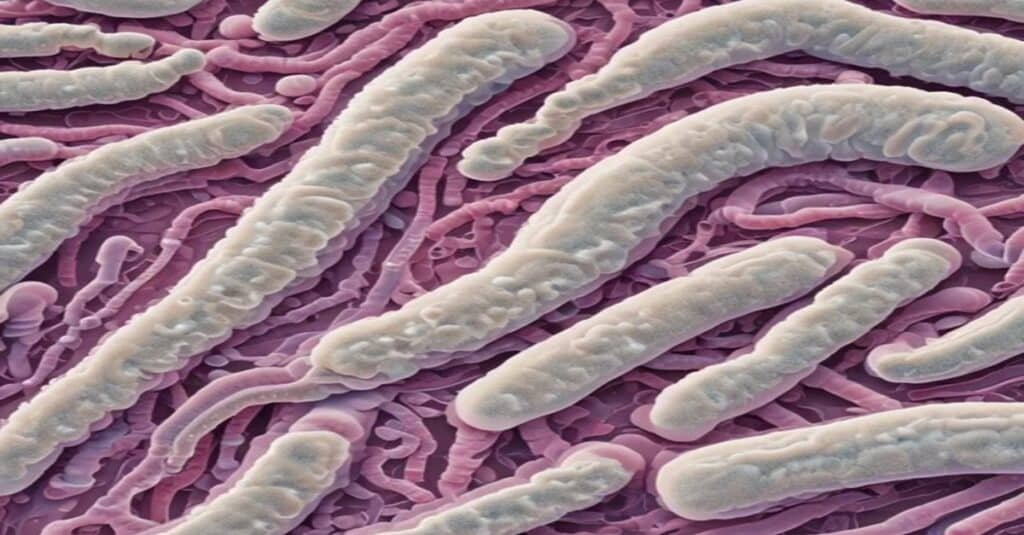Probiotic Yeast Saccharomyces boulardii: A probiotic unlike others with wide-ranging benefits
The human gut is more than a site of mechanical transit, biochemical changes, and gradual digestion. Recent studies show it is also concerned with metabolic regulation, immune modulation, and neurological health. For instance, there’s a gut-brain axis that links what happens in the intestines with neurotransmitters and brain function. Since the gut has associated lymphoid tissue, it also regulates how immune cells interact with microorganisms.
No wonder there’s recently been a special interest in dysbiosis, the technical name for gut microbiota disturbances. These problems with gut microbiota are linked to gastrointestinal diseases, systemic inflammation, and sometimes neurologic symptoms. In this context, probiotics are emerging as tools to restore gut balance. Increasing evidence shows these beneficial microorganisms can improve health outcomes and sometimes solve underlying medical diseases.
There is a wide range of probiotic bacteria, but some probiotic yeasts, such as Saccharomyces boulardii, are also considered beneficial. This robust yeast strain differs from other probiotics because it is not a bacteria. As such, it can survive many antibiotics and has proven resistant to gastric acids. Saccharomyces boulardii is a probiotic unlike others, and this blog will help you understand some reasons.
After reading this article, you will understand why this yeast is essential and how to use it. We will explore its therapeutic applications and how it can be used to prevent various diseases.

What everyone should know about Saccharomyces boulardii
The full name of Saccharomyces boulardii is Saccharomyces cerevisiae var. boulardii. In other words, this strain is a variation of Saccharomyces cerevisiae. That’s why we have such a long name. But this probiotic is so popular that people simply call it Saccharomyces boulardii, for short. To simplify things further, we can refer to it as S. boulardii.
As mentioned above, one of the main features of this strain is that we’re dealing with a type of yeast. Most probiotics are considered beneficial bacteria, but this one is a fungus. It has an oval-to-round shape and is regarded as an excellent source of nutrients. As a fungus, there are structural and reproduction differences between S. boulardii and other probiotics.
This yeast was isolated in the early 20th century and found in tropical fruits. As a yeast, S. boulardii has a thick cell wall and an oval shape. As opposed to microbes, yeast reproduces sexually, but S. boulardii can also reproduce asexually. The cell wall of this yeast is very robust, and it is made of mannoproteins and beta-glucans. These substances help S. boulardii adhere to the intestinal mucosa. They also resist gastric acidity, bile salt, and other environmental stresses. That’s one of the reasons why this probiotic has a very high survival rate, and a high proportion of what you ingest will survive and reach the gut (1).
Another important aspect of probiotic yeast S. boulardii is the number of biochemical processes it undergoes. Since it is a yeast, its application is broader than most bacteria. It produces a variety of enzymes, including proteases, lipases, and maltases. These enzymes contribute to nutrient digestion and absorption. However, it also releases byproducts into the gut, including antioxidants, polyamines, and short-chain fatty acids. Each contributes to gut health, as we will discuss further.
Benefits and health applications of S. boulardii
S. boulardii is currently used in many ways in the food and supplement industry. It is a high-amino acid source of protein and is also responsible for producing glutathione, one of the most important antioxidants in the human body.
The following sections will explore S. boulardii’s most important research areas and health applications.
S. boulardii has a very high nutritional value
The nutritional value of S. boulardii is intrinsic to yeast and triggered by its biochemical processes. It has a high protein content and is rich in iron, manganese, copper, and trace minerals. It is also a source of vitamin B, especially biotin, riboflavin, vitamin B12, and thiamin.
However, one of the most interesting aspects of S. boulardii is how it reduces antinutrient levels. Antinutrients are substances in fruits and vegetables that limit nutrient absorption. That is why you shouldn’t eat many of them raw, especially cruciferous vegetables, potatoes, and legumes.
Seeds, grains, legumes, and nuts contain phytates in different levels, which are considered antinutrients. These phytates reduce the absorption of proteins, fat, starches, and minerals. However, in the presence of S. boulardii, phytate levels are reduced, and folate synthesis increases (2).
S. boulardii can help stop acute and persistent diarrhea
Acute diarrhea often happens due to gut infection with pathogenic bacteria. These bacteria find a spot, adhere to the intestinal lining, and colonize the area. They produce toxins and substances that initiate inflammatory reactions and drag water, causing diarrhea and pain.
In this context, S. boulardii can help by making a type of acid that pathogenic bacteria do not tolerate. The new gut environment is slightly acidic; only beneficial bacteria can thrive. That’s why many probiotic brands combine S. boulardii with Lactobacilli. Because it is known that probiotic yeast helps lactic acid bacteria grow faster and stronger (3).
As a probiotic yeast, S. boulardii treats acute and persistent diarrhea for all of the above. A meta-analysis of seven clinical trials shows that it works. It stabilizes childhood diarrhea, and its effects show after only 24 hours (4). Another study on persistent diarrhea shows similar results, with a significant decline in diarrhea symptoms in 50% of patients. Interestingly, the latter research combined Lactobacilli and S. boulardii to achieve beneficial results (5).
S. boulardii can also prevent diarrhea after using antibiotics
Traveler’s and acute diarrhea caused by common pathogens differ from antibiotic-associated diarrhea. The latter is triggered by continuous consumption of antibiotics for a very long period. Sometimes, it is a part of the treatment we can’t avoid, but these drugs wipe the gut out of beneficial bacteria and trigger high stool frequency.
Without beneficial bacteria, pathogenic bacteria have no competition to thrive and colonize the gut. One such microorganism is Clostridium difficile, a bacteria that causes diarrhea and severe colon damage. Probiotics are usually very good at dealing with this problem, but S. boulardii has a particular role agains C. difficile.
This probiotic yeast is highly effective at treating antibiotic-induced diarrhea. It inhibits the activity of Clostridium difficile toxins by producing protease enzymes. When these enzymes come into contact with Toxin A and B receptor sites, they degrade the protein structure and reduce their effect on the body.
Moreover, S. boulardii promotes the restoration of gut microflora. It can be administered with other probiotics to potentiate their actions and increase their effectiveness. After supplementing with S. boulardii, antibiotic-associated diarrhea is reduced by 25% (6).
To see the video below in YouTube click here.
S. boulardii can reduce inflammation in the gut and beyond
Many studies have examined S. boulardii in the context of gut inflammation. This probiotic can reduce inflammation levels, especially in inflammatory bowel diseases. In Crohn’s disease, intestinal bacteria damage the gastrointestinal tract. The gut has erratic inflammation and high permeability, meaning bacteria can penetrate the intestinal wall and trigger more inflammation. However, after a few weeks, S. boulardii can reduce gut inflammation in Crohn’s disease, even when steroidal therapy does not yield consistent results (7).
Another inflammatory disease in the gut is ulcerative colitis. This ailment is more severe and dangerous than Crohn’s disease and is usually treated with antibiotics. However, there’s a high rate of antibiotic resistance among these patients. In these cases, probiotics can help counter the damaging effects of pathogenic bacteria. S. boulardii, in particular, blocks the adherence potential of bacteria such as adherent-invasive E. coli (AIEC). Besides, it lowers the pro-inflammatory cytokine level and helps ulcerative colitis patients experience symptomatic relief (8).
The effects of S. boulardii on reducing cytokine levels are not limited to the gut. According to a recent study on HIV patients, administering the probiotic may also lower the circulating levels of Interleukin-6. This is a marker of systemic inflammation; a lower count means inflammation levels reduce proportionally. Thus, the inflammatory potential can also benefit patients with infections outside the gut and chronic inflammatory diseases (9).
S. boulardii can counter other fungus infections, such as vaginal candidiasis
Despite being a fungus, S. boulardii can protect the body against fungal infections, even if they are far from the gut. One of the most common fungus-associated vaginal infections is vaginal candidiasis. It is triggered by Candida albicans and usually results from large antibiotic consumption that affects the composition of the vaginal microbiota.
It is fascinating to note how oral consumption of S. boulardii can change fungus interaction with the vaginal tissue. After consuming this probiotic, Candida albicans reduces its cohesion to epithelial cells in the vagina. In other words, it won’t bind as tightly and reduces its pathogenicity. Despite being far from the vaginal tissue and not having any contact, S. boulardii in the gut can modulate the microbiota and benefit vaginal health (10).
S. boulardii has antibacterial and antiviral properties on its own
This probiotic yeast counters the adhesion potential of E. coli and reduces the cohesion of C. albicans. However, it also has other mechanisms of action against additional bacterial and viral strains. It works by directly inhibiting the microbes, changing the gut environment, or producing immunomodulatory effects that help users fight the disease.
For example, S. boulardii inhibits the toxin produced by Vibrio cholera and inhibits chloride secretion by this bacteria, reducing the symptoms of the infection. Additionally, it sticks to the surface of Salmonella, reducing its multiplication and accelerating excretion via the stools. Studies on Helicobacter pylori also show that S. boulardii reduces stomach inflammation and helps the body produce IgA to fight the infection. It also suppresses chloride excretion caused by rotavirus, assisting patients to recover from this disease (11).
These applications benefit the gut and may also affect other body areas. As we will discuss further, S. boulardii can also reduce infectious disease through other means.
S. boulardii stimulates the immune system in children and adults
As noted above, S. boulardii can fight infections by modulating the immune system. The immune system defends the body against infectious disease, detects and destroys cancer cells, and keeps tissues in good condition. S. boulardii can stimulate immune activity, help the body produce more immunoglobulins, cytokines, and chemokines, assist immune tissues in developing more immune cells, and enhance the immune response after pathogen exposure, a process known as immune priming (12).
That’s why IgA levels increase, and S. boulardii helps fight a Helicobacter pylori infection. But besides growing immunoglobulins, there’s an increase in the rate of CD8 lymphocytes. This modulation in the immune system starts after only seven days of treatment with the probiotic yeast.
In other words, by increasing the number of defense cells available, S. boulardii can strengthen your immune system in as little as one week. However, remember that these effects may vary from person to person, depending on other factors, including nutrition and your current state of health (13).
S. boulardii can reduce the incidence of stomach cancer
This probiotic yeast has the potential to reduce the incidence of cancer for many reasons. As mentioned above, it helps the immune system produce more cells and become more responsive. The immune system fights infections and detects and destroys cancer cells.
S. boulardii also has an anti-inflammatory potential. Cancer thrives on inflammation and grows larger. This probiotic yeast reduces cancer growth by reducing inflammatory cytokines.
Studies also show that S. boulardii has an antioxidant potential and produces glutathione, one of the most important antioxidants in the human body. Reducing oxidation can decrease genetic damage in tissues.
However, in addition to the abovementioned mechanisms, S. boulardii can also influence cancer signaling. It promotes the expression of apoptotic proteins and reduces the expression of oncogenes. In other words, it prompts cancer cells to produce substances that will ultimately destroy them while reducing the production of those that convert regular cells into cancer.
Scientific research shows that this effect is more profound in gastric and colon cancer. However, remember that these are mainly in vitro studies, and their application in clinical settings remains to be seen (14, 15).
Key takeaways from consuming S. boulardii
S. boulardii is a probiotic yeast that differs from probiotic bacteria in several ways. It is much more resistant to stomach acid and other environmental problems. It is also resistant to many antibiotics that bacteria do not survive. It is well-tolerated and considered safe. The recommended dose is 500 to 1000 mg, corresponding to 10-20 billion colony-forming units.
S. boulardii is an excellent probiotic yeast with the potential to treat various gastrointestinal conditions. It is helpful to treat different forms of diarrhea, including antibiotic-associated diarrhea and traveler’s diarrhea. It can be used along with lactobacilli to enhance the effects of these bacteria and help them thrive. Besides treating diarrhea, it also supports immune function and has a potent anti-inflammatory effect. Additionally, studies suggest it can be used to reduce the incidence of stomach and colon cancer.
More studies are needed to validate the application of S. boulardii in diseases such as stomach cancer and rheumatoid arthritis. However, it is a probiotic yeast with a very high therapeutic potential and little to no side effects. Still, remember to ask your doctor before adding new probiotics or any type of supplement to your daily regime.
References:
Graff, S., Chaumeil, J. C., Boy, P., Lai-Kuen, R., & Charrueau, C. (2008). Influence of pH conditions on the viability of Saccharomyces boulardii yeast. The Journal of general and applied microbiology, 54(4), 221-227.
Lazo‐Vélez, M. A., Serna‐Saldívar, S. O., Rosales‐Medina, M. F., Tinoco‐Alvear, M., & Briones‐García, M. (2018). Application of Saccharomyces cerevisiae var. boulardii in food processing: a review. Journal of applied microbiology, 125(4), 943-951.
Tomičić, Z., Šarić, L., & Tomičić, R. (2024). Novel Insights in the Application of Probiotic Yeast Saccharomyces boulardii in Dairy Products and Health Promotion. Foods, 13(18), 2866.
Szajewska, H., & Skórka, A. (2009). Saccharomyces boulardii for treating acute gastroenteritis in children: updated meta‐analysis of randomized controlled trials. Alimentary pharmacology & therapeutics, 30(9), 960-961.
Gaon, D., Garcia, H. U. G. O., Winter, L. U. I. S., Rodríguez, N. O. R. A., Quintás, R., González, S. N., & Oliver, G. U. I. L. L. E. R. M. O. (2003). Effect of Lactobacillus strains and Saccharomyces boulardii on persistent diarrhea in children. Medicina (Buenos Aires), 63(4), 293-298.
McFarland, L. V. (2010). Systematic review and meta-analysis of Saccharomyces boulardii in adult patients. World journal of gastroenterology: WJG, 16(18), 2202.
Kelesidis, T., & Pothoulakis, C. (2012). Efficacy and safety of the probiotic Saccharomyces boulardii for the prevention and therapy of gastrointestinal disorders. Therapeutic advances in gastroenterology, 5(2), 111-125.
Sivignon, A., De Vallée, A., Barnich, N., Denizot, J., Darcha, C., Pignède, G., … & Darfeuille-Michaud, A. (2015). Saccharomyces cerevisiae CNCM I-3856 prevents colitis induced by AIEC bacteria in the transgenic mouse model mimicking Crohn’s disease. Inflammatory bowel diseases, 21(2), 276-286.
Villar García, J. (2017). Efecto del tratamiento con probióticos (Saccharomyces Boulardii) sobre el microbioma intestinal y la inflamación sistémica en el paciente VIH virológicamente suprimido.
Pericolini, E., Gabrielli, E., Ballet, N., Sabbatini, S., Roselletti, E., Cayzeele Decherf, A., … & Vecchiarelli, A. (2017). Therapeutic activity of a Saccharomyces cerevisiae-based probiotic and inactivated whole yeast on vaginal candidiasis. Virulence, 8(1), 74-90.
Abid, R., Waseem, H., Ali, J., Ghazanfar, S., Muhammad Ali, G., Elasbali, A. M., & Alharethi, S. H. (2022). Probiotic yeast Saccharomyces: Back to nature to improve human health. Journal of Fungi, 8(5), 444.
Stier, H., & Bischoff, S. C. (2016). Influence of Saccharomyces boulardii CNCM I-745on the gut-associated immune system. Clinical and experimental gastroenterology, 269-279.
Kil, S., Jong, H., & Gil, S. (2005). Saccharomyces boulardii reduced intestinal inflammation in mice model of 2, 4, 6-trinitrobencene sulfonic acid induced colitis: based on microarray. The Korean Journal of Gastroenterology, 1598(9992), 2233-6869.
Pakbin, B., Pishkhan Dibazar, S., Allahyari, S., Javadi, M., Farasat, A., & Darzi, S. (2021). Probiotic Saccharomyces cerevisiae var. boulardii supernatant inhibits survivin gene expression and induces apoptosis in human gastric cancer cells. Food Science & Nutrition, 9(2), 692-700.
Fortin, O., Aguilar-Uscanga, B., Vu, K. D., Salmieri, S., & Lacroix, M. (2018). Cancer chemopreventive, antiproliferative, and superoxide anion scavenging properties of Kluyveromyces marxianus and Saccharomyces cerevisiae var. boulardii cell wall components. Nutrition and cancer, 70(1), 83-96.





Appreciate this post. Will try it out.